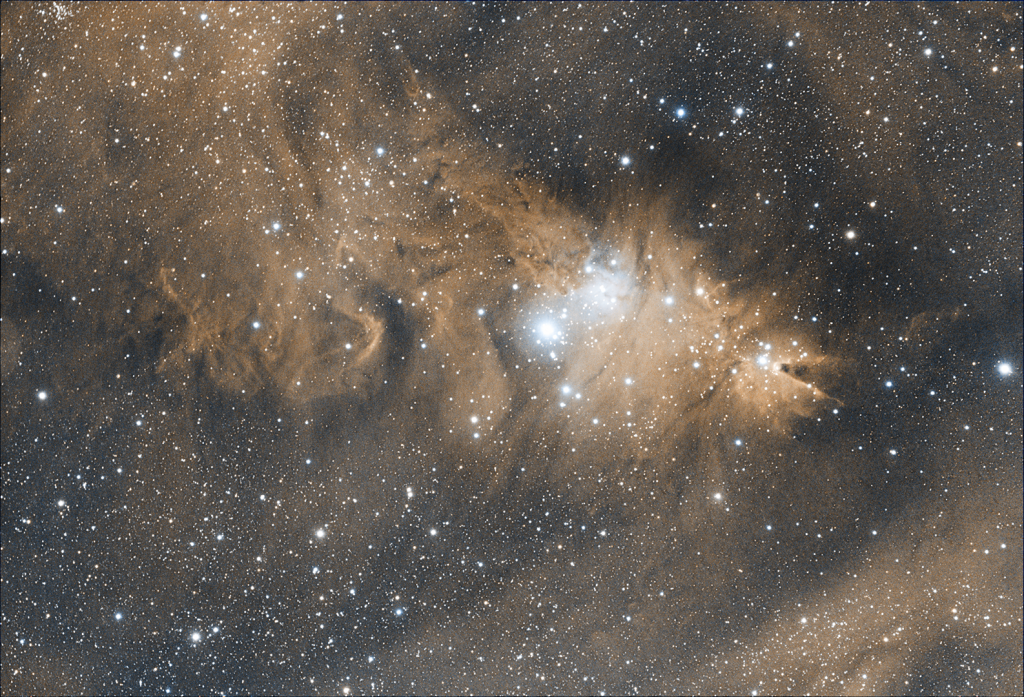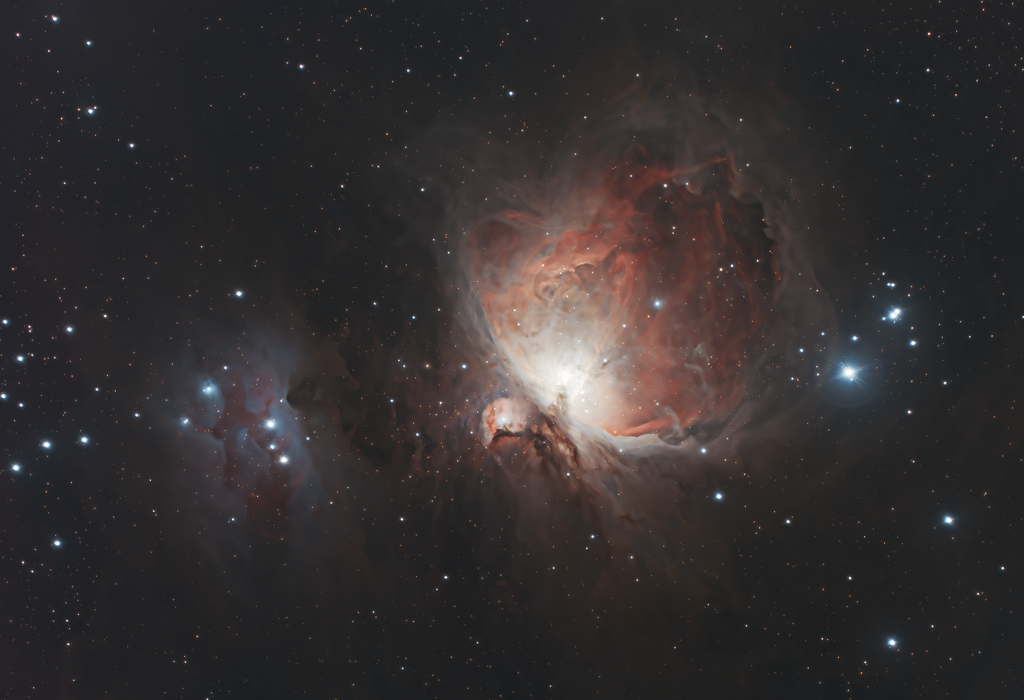
Thursday night I went up to the River Ridge Observatory to do some narrow band imaging. One of my targets was NGC 2264 also known as The Christmas Tree cluster, the Cone Nebula, and the Fox Fur Nebula. Starting from the right, see that dark cone on its side? that is, not surprisingly, The Cone Nebula. Immediately to it’s left is another cone but this time a cone of stars with it’s peak almost touching the peak of that nebula. From this orientation, the Christmas Tree Cluster is on its side with its base being that brightest star in the middle. Finally, those swirls and stuff on the left make up the Fox Fur Nebula. These are all part of a common molecular cloud where stars are forming in the constellation of Monoceros, the unicorn. This was made with my 11″ SCT at f/1.9 using a dual narrowband filter and my ZWO ASI294MC Pro. A total of sixty minutes integration.

